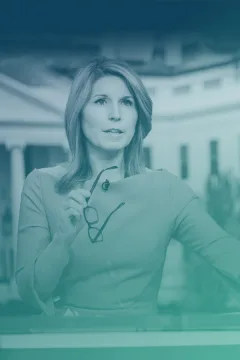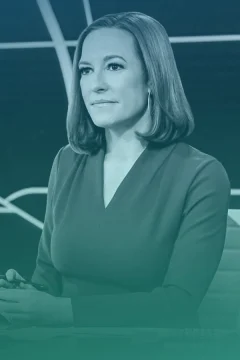Former President Donald Trump’s machinations to avoid accountability have prompted new legislation not just in criminal law, but also in copyright law — where his taste in playlists may have a far more expansive legal effect.
While Trump is frequently described as a force of divisiveness, his choice of music for his rallies and campaign commercials has brought together a wide coalition of artists from multiple genres and eras in complaining about the allegedly unauthorized use of their material. An only partial list of artists includes Neil Young, Beyoncé, Foo Fighters, ABBA, the White Stripes, Celine Dion and, most recently, the estate of Isaac Hayes.
As one noted legal expert puts it: “Trump is the greatest abuser of musical property rights, ever, in terms of people running for president.”
Trump’s choice of music for his rallies has brought together a wide coalition of musical artists from multiple genres and eras in complaining about his allegedly unauthorized use.
Trump is a recidivist offender, having also drawn objections in 2016 from artists including Bruce Springsteen, who objected to Trump playing “Born in the USA.” Rather than taking legal action against Trump, the “Boss” publicly endorsed Trump’s opponent — Hillary Clinton — which resulted in Trump’s attendees booing every time the song was played. Trump’s 2016 campaign use of “Start Me Up” also drew threats of legal action by the Rolling Stones.
But despite all these complaints, lawsuits have been rare. Guyanese-British singer songwriter Eddie Grant sued Trump in 2020 for using Grant’s 1983 hit song “Electric Avenue” in a Twitter video mocking Trump’s then-opponent Joe Biden, seeking damages and attorney’s fees for unauthorized use of the song. This September, following a lawsuit filed by the estate of Isaac Hayes against Trump for unauthorized use of his song “Hold On, I’m Coming,” a federal judge granted an emergency injunction against Trump’s further use of the song as the litigation continues.

The relative paucity of lawsuits versus the number of complaints may be explained by the legal complexities involved.
Artists who want to stop Trump from using their music typically start with a cease-and-desist letter, which puts the offender on notice of legal action if they don’t stop using the song. If the letter doesn’t work, then the artist must file suit — and that’s where it gets tricky, because of music licensing agreements as well as the much misunderstood legal doctrine of “fair use.”
At first glance, it seems easy enough for campaigns to get legal authorization to use particular songs. That is because performing rights organizations like ASCAP and BMI sell licensing packages offering access to millions of songs. While most large venues have bought such packages, a lawsuit against Newt Gingrich’s use of Survivor’s “Eye of the Tiger” (made famous in “Rocky III”) found a hole in this protection by specifically targeting use of the music at small venues, not large ones.
But even when the campaign obtains a licensing package, the artists can complain to the organization if they object to the use of their song, and the organization will then contact the campaign asking them to stop. If the campaign refuses to stop using the song, the artist may bring several different types of claims — most typically copyright infringement but also claims under the Lanham Act for trademark infringement. The latter is often premised on the idea that using the artist’s music may imply the artist endorses the candidate.
The use of music played at rallies is a far more straightforward legal issue than it is in the digital world.
As a defense to the copyright claim, defendants may adopt the tactic the Trump campaign used with the lawsuit filed by Isaac Hayes’ estate, in which Trump argued he had a blanket license from BMI and also claimed use of the song was allowed under the fair use doctrine. Trump also tried to argue that Hayes did not own enough of the copyright.
The fair use doctrine grants an exception to copyright protections when taking into account four factors: the purpose and character of the use, the nature of the copyrighted work, the amount of substantiality of the portion used, and the effect of the use on the potential market value or value of the work. It doesn’t take a legal scholar to see how much wiggle room exists in these factors.












